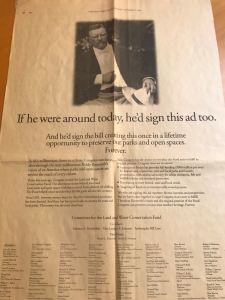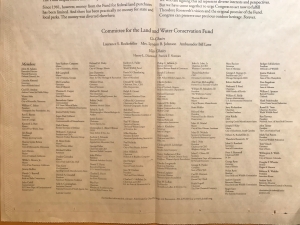A brief history of efforts in the last 32 years to restore equity to state outdoor recreation grants. Updated 8-29-20
For documentation purposes NASORLO is listing below links to previous attempts to revitalize the LWCF and to restore robust and guaranteed funding for state outdoor recreation grants. Each of these significant efforts were the result of national studies which showed the need for and benefits of state and local outdoor recreation and the values to the nation’s well being and economic future. They led to the recent passage of legislation to permanently re-authorize the LWCF and restore a guaranteed % for state, territorial and local grants.
In 1965 the Land and Water Conservation Fund was passed which authorized a program to provide funding for outdoor recreation on the state, local and federal level. The authorized maximum funding for the program was eventually agreed to be $ 900 million dollars annually, with 60% of the annual proceeds being distributed equitably to the states for a state and local outdoor recreation grant program and 40% set aside for federal land acquisition. In 1976 a conference committee eliminated the state requirement, but left a required minimum of 40% be allocated for federal land acquisition. Since that time there have been at least four major efforts to fully and permanently fund LWCF at the authorized $ 900 million dollar level and to restore a percentage, or equitable share, for state and local outdoor recreation grants. The following generally describes those efforts, with links to provide more information.
The American Heritage Trust Fund proposal of Rep. Morris Udall was introduced in the House in 1988. This proposal would, put 1 billion dollars per year into the LWCF. It would reserve 30 percent of annual Trust spending for federal land acquisition, 30 percent for grants to the state and local governments, and 10 percent for distribution under the Urban Park and Recreation Recovery Act. For the decade of the 1990s, an additional 10 percent would be reserved for state trust funds that would mirror the American Heritage Trust. The remaining 20 percent is free to be used for any of these purposes. The following link from the American Heritage Foundation ( not affiliated with this legislation and generally opposed to federal funding for parks ) is a good read and points out many issues that led to the failure of this Act. Go to https://www.heritage.org/homeland-security/report/hr4127-the-american-heritage-trust-act
The next major effort came in 2000 with the introduction by Rep. Young of Alaska of the Conservation and Reinvestment Act ( known as CARA ). This bill grew out of an initative called Americans for Heritage and Recreation, formed with NASORLO’s support in 1997 and kicked off with a LWCF Summit in California. It’s goal was to revitalize the LWCF program and restore equity to the state and local grants. CARA initially proposed to fully fund the LWCF at a $ 900,000,000 a year level with 50% guaranteed for state outdoor recreation grants and 50% for federal land acquisition. In addition, it would fund UPAR at $ 125,000,000 a year and the National Historic Preservation Act at an annual level of $ 150,000,000, plus fund other wildlife and habitat purposes. This legislation also failed. But Congress did pass something, called CARA Light !! It provided for full funding for one year, but did not include equity for state and local grants. It also did not guarantee long term funding. For the full text of the bill go to…. https://www.govtrack.us/congress/bills/107/hr701/text/ih
And for comments about what CARA was to do for the nation, look at the following testimony heard in Congress…. http://commdocs.house.gov/committees/resources/hii56598.000/hii56598_0f.htm
Many state and local grants advocates felt their involvement and support for CARA, help bring attention to the needs for a revised LWCF, but felt used when the final deal was struck for CARA lite. See this summary of the promise of CARA, the resultant CARA light and the limited impact on state grants, go to.. Americans for Our Heritage and Recreation. C
So the passage of S 47, the John D. Dingell, Jr. Conservation, Management, and Recreation Act of 2019, which fulfilled the dreams of those federal, state and local elected officials and outdoors advocates ( including the ongoing work of NASORLO ) that put so much work into these two previous effort, was a significant effort and permanently re-authorized LWCF. It should be noted the state and local advocates promoted the Act separately from the larger LWCF Coalition. This was consistent with the lessons learned during the CARA deliberations. They worked closely with the National Governors Association and remained firm that the restoration of equity in the distribution of the Fund with federal allocations must be included. In the final Act these proponents felt the Dingell Act restored equity and consistency to the state and local assistance program for outdoor recreation by requiring a 40% share of the annual funding. To find more information Go to.. https://www.congress.gov/bill/116th-congress/senate-bill/47/text
The only issue not resolved, sought in the previous two efforts, was full funding of LWCF. That matter was taken up in 2020, where a coalition of non profits, state advocates, NASORLO, City Park Alliance, NASPD, NRPA and others supported the Great American Outdoor Act ( GAOA ). In a decisive action, President Trump indicated, at the request of Senator’s Udall CO and Daine’s MT, and with Sen. Manchin WV as a co-sponsor, that he would sign that bill if Congress would pass it. Since the Senators had drafted a bill to fully and permanently fund LWCF at the $ 900,000,000 level, the Senate passed this legislation. The House drafted a similar bill with a veto proof majority of co-sponsors which led to it’s passage. President Trump signed the bill and that accomplished the long time goal of NASORLO to restore equity between state and federal allocations and permanently fund LWCF at the full amount. If you go to the search engine on this web page and type in GAOA, or the Great American Outdoor Act, you can find articles and materials related to that bill and it’s support.
PS Here are PDF’s of materials distributed to try pass CARA from the year 2000. You may have to print out and/or magnify.. fyi..



